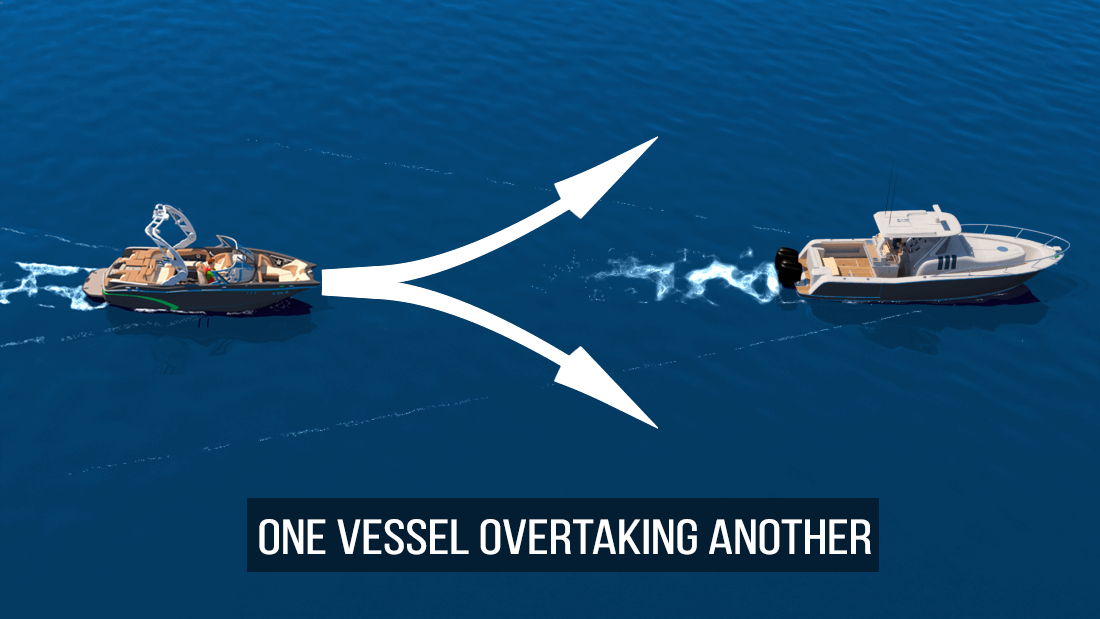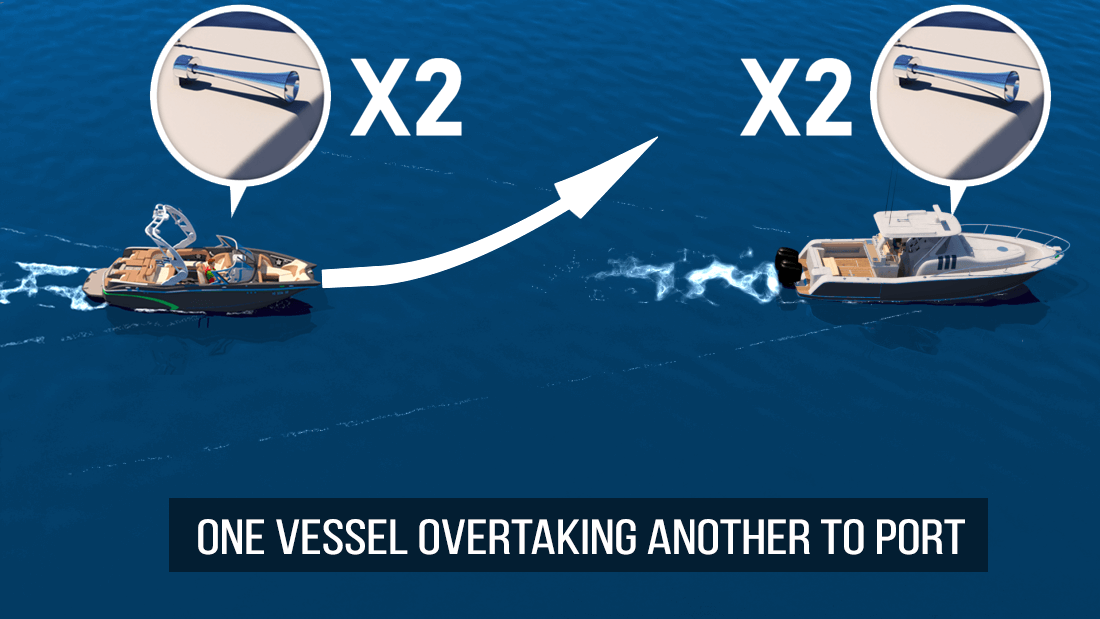Overtaking another vessel - Boating Right of way Rules Collision regulations
What must you do if you wish to overtake another vessel?
When two vessels are moving in the same direction, the vessel passing is the give-way vessel and should keep out of the way of the vessel being passed. The vessel being passed is the stand-on vessel and must maintain its course and speed. If the stand-on vessel realizes that the course intended by the give-way vessel is not safe, it should sound the danger or doubt signal.
During nighttime, only the sternlight (white light) of the vessel being overtaken would be visible, with neither sidelight in sight.

How many blasts must you sound when overtaking another vessel?
When overtaking a vessel, always remember that you are the give-way vessel until you are well past and safely clear of the stand-on vessel. Avoid cutting in front of, obstructing, or putting another vessel in danger.
The boat behind (give-way vessel): "I intend to pass you on your starboard side" - 1 short blast (1 sec.)
The boat in front (stand-on vessel): "Agreement" - 1 short blast (1 sec.)

The boat behind (give-way vessel): "I intend to pass you on your port side" - 2 short blasts
The boat in front (stand-on vessel): "Agreement" - 2 short blasts

What actions should be taken by the operator of a power-driven vessel that is being overtaken by a sailboat?
Whether it's a sailing vessel or a power-driven vessel, the stand-on vessel is always the one being overtaken, regardless of the type of boat.

